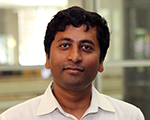Augmented Reality & Virtual Reality (AR/VR) Programming
for High School Students
for High School Students
Presented by Visual Specialist - Dr. Arya Basu!
Saturday's from January 21st to April 8th from 11.00 AM to 12.00 Noon Central

iStart Valley is pleased to offer Augmented and Virtual Reality (AR/VR) Programming, a unique course for High School Students to showcase their future ready skills in emerging technology areas. High Schools and Colleges across the globe are working towards making Augmented and Virtual Reality development part of the School Curriculum. 32 Million jobs are being enhanced by 2030 as Augmented and Virtual Reality have begun to empower people and businesses across all Industries.
Computer graphics are an essential aspect of modern computation platforms. With the rapid progress of microprocessor technology, it’s possible to produce three-dimensional (3D) computer graphics that can be manipulated in quasi real-time. This technology, which enabled interactions with three-dimensional virtual objects, immediately made its way into several mainstream industry including design, visualization and video gaming. Advancements in AR and VR have now led to "Metaverse" next iteration of the internet persistent online 3-D virtual environments.
This course will introduce the concepts of visualization using real-time game engines such as Unity. For the duration of the course, we will focus on real-time rendering game engines and its various applications. We shall learn (see demos) about various 3D visualization paradigms such as Virtual Reality (VR) and Augmented Reality (AR). This course will introduce the concepts of basic interactive programming via scripting using the C# programming language. We shall implement basic 3D asset manipulation using the scripting language mentioned above. Finally, we shall learn about various application (immersive) deployment strategies that real-time game engines have to offer.
Learning Outcomes
- Learn the basic software interfaces
- Scripting object manipulations in real-time
- Learn (through examples) various visualization paradigms
- Project deployment and management (archiving)
Participants will work towards final Capstone Project that will be presented to panel of judges at the end of the program. Participants will be presenting their own Virtual Experience duly developed during the course. Please note students can bring their own devices to experience deploying these immersive projects. Support for troubleshooting will be provided on the need basis.
Phase 1:
- Intro to Unity and game engine interface
- Transferring assets to Unity; understanding asset dependency
Phase 2:
- Concepts of programming in real-time and Object manipulation in real-time
- Immersive experience deployment paradigms – VR + AR
Phase 3:
- Project archival and retrieval through File Repository system
- Practice & Final Presentation
Target Audience: Program is recommended for High School Students from 9th to 12th grades. College students and AR & VR Enthusiasts can also attend this program.
Schedule: Every Saturday from January 21nd to April 8th from 11 AM to 12.00 Noon Central
Fees: Total Fee for the Program is $500. Tax-exempt Fees can be paid either in Full or in two convenience installments of $300 and $200. The second Installment would be due after the first 6 sessions.
Takeaways: Each Participant will receive a Certificate Signed by Dr. Arya and a Digital Badge will be issued on the world’s leading credential platform used by the Top Universities across the Globe.
Meet the Expert – Dr. Aryabrata Basu
 Aryabrata Basu is a Visual Information Specialist at the Digital Visualization Laboratory of Emory Center for Digital Scholarship, Emory University. Arya creates, modifies, and configures 3D models using a variety of computer modeling, simulation software, and geospatial data. In partnership with faculty and ECDS staff, Arya prepares aesthetically composed digital media through graphic design, image processing, and data visualization for use in ECDS-supported digital scholarship projects. He also researches and explores new methods of visualizing data, including 3D, virtual reality, and augmented reality.
Aryabrata Basu is a Visual Information Specialist at the Digital Visualization Laboratory of Emory Center for Digital Scholarship, Emory University. Arya creates, modifies, and configures 3D models using a variety of computer modeling, simulation software, and geospatial data. In partnership with faculty and ECDS staff, Arya prepares aesthetically composed digital media through graphic design, image processing, and data visualization for use in ECDS-supported digital scholarship projects. He also researches and explores new methods of visualizing data, including 3D, virtual reality, and augmented reality.

